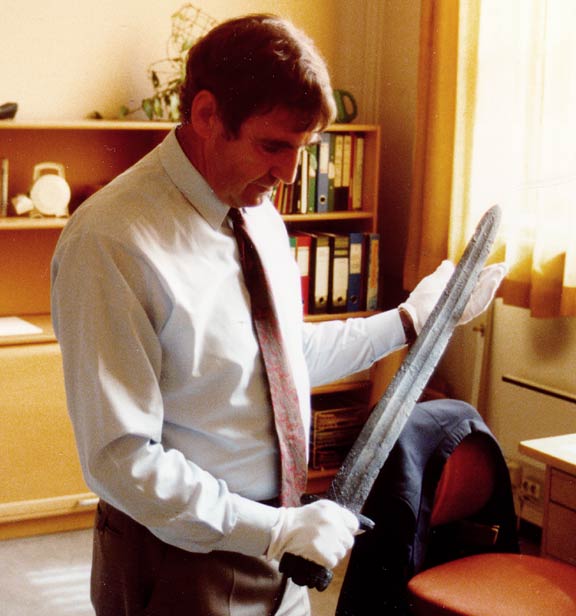 |
|
|
|
He will be sorely missed by all that knew him. |
|
Truly the end of an era. |
 |
|
|
| plate I | Lorange's (1889) caption page for plate VI |
| plate II | Lorange's (1889) caption page for plate V |
| plate III | Lorange's (1889) caption page for plate I |
| plate V | previously displayed at the Higgins Armory Museum, Worcester, MA, USA |
| plate VI (top) | further
description and illustrations of entire sword Refer also to a previous examination and publication of this sword: Werner, Gunnel. 'Konservering av tre vikingatida svärd med inläggningar', Fornvännen 76 (1981), pp. 16-23. |
| plate VI (bottom) | further description and illustrations of entire sword |
| 34-35 | Androshchuk notes
that the features of this example, found in Holland, conform
most closely to Wilfried Menghin's 'Dunum' type, a type currently
unknown in Scandinavian contexts. Androshchuk, Fedir, Viking Swords: Swords and Social Aspects of Weaponry in Viking Age Societies (Studies 23), Stockholm: Swedish History Museum, 2014, p. 44. |
| 46 | Petersen's (1919) colour plate I |
| 58 | drawing of hilt of WK-21 from Coffey and Armstrong (1910) |
| 63 | Hiltipreht inscription on 1928:382 |
| 66 | Plunket's (1847) watercolours of WK-5, WK-31 and WK-33 |
| 86 (middle) | further description of boy's sword and associated spear and axe |
| 114 | Petersen's (1919) colour plate III |
| 124 | wider illustration of detail from 12th century font in Verona |
| 146 | Alan Williams presently
(2005) interprets the +VLFBERH+T sword in the Württembergisches
Landesmuseum, Stuttgart (inventory 1973-70), which he first reported
in 1977, as having been formed from a billet of crucible steel
folded twice and forged into a blade. This and three additional
+VLFBERH+T swords formed of hypereutectoid steels interpreted
as possibly being forged of crucible steels imported from the
East are reported in 'Crucible Steel in medieval swords', Metals
and Mines: Studies in Archaeometallurgy (London, 2007), pp.
233 - 241. See also Dr Williams' Gladius (XXIX (2009), pp. 121-184) article A Metallurgical Study of Some Viking Swords for several additional examples. |
18 Apr 2012